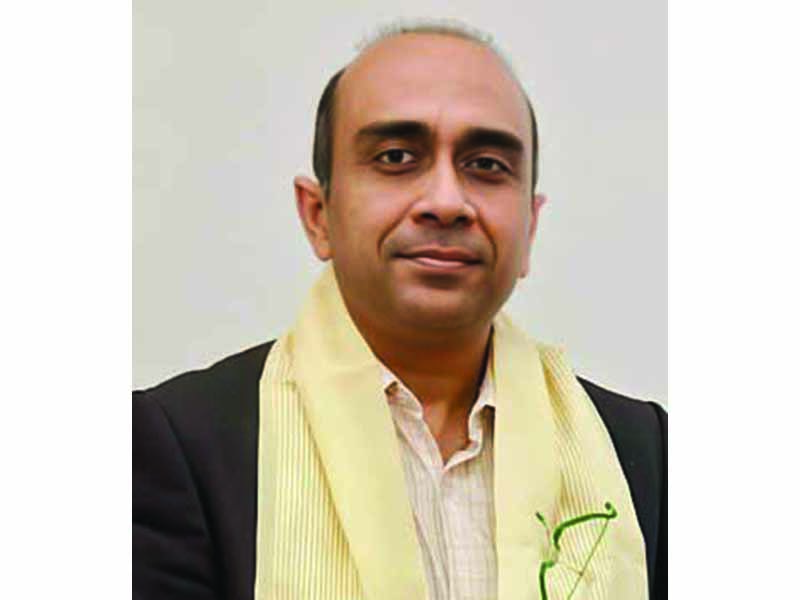– Dr. Neeraj Gupta is a pediatric allergy specialist and senior consultant at Sir Ganga Ram Hospital, Delhi
Dr. Neeraj Gupta
Pediatric allergies adversely impact children’s quality of life, resulting in poor sleep, school performance, and overall well-being
Pediatric allergies, aka childhood allergies, have become a major health concern worldwide, particularly in India, where rising environmental pollution and lifestyle changes are exacerbating them. Pediatric allergies adversely impact children’s quality of life, resulting in poor sleep, academic performance, and overall well-being. Parents need to be well-informed about allergy symptoms for timely intervention, and taking preventive measures to safeguard the health and well-being of children.
Symptoms
Allergic reactions happen when a child’s immune system overreacts to usually harmless substances known as allergens. Common allergens include pollen, dust mites, pet dander, mold, certain foods, insect stings, and medications. Pediatric allergies manifest in several forms, such as allergic rhinitis, asthma, food allergies, eczema, and anaphylaxis. The symptoms of these common allergies that afflict children are:
Allergic Rhinitis (hay fever). Frequent sneezing; runny or stuffy nose; itchy, watery eyes; nasal congestion; postnasal drip leading to throat irritation.
Asthma. Chronic cough, especially at night or after physical activity; wheezing and shortness of breath; chest tightness; frequent respiratory infections. Moreover, symptoms worsen after exposure to allergens such as pollen, dust, or pet fur.
Food allergies. Skin rash, hives, or eczema; swelling of lips, tongue, or face; abdominal pain, nausea, diarrhoea; difficulty breathing or anaphylaxis (a severe life-threatening reaction).
Eczema (Atopic Dermatitis). Dry, itchy, and inflamed skin; red or scaly patches, often on elbows, knees, cheeks; skin infections due to constant scratching.
Anaphylaxis (Severe Allergic Reaction). Sudden difficulty in breathing; swelling of throat and tongue; rapid drop in blood pressure; dizziness, fainting. This is a medical emergency requiring epinephrine injection.
Diagnosis. Accurate diagnosis is essential for effective management. Pediatricians and allergy specialists use detailed medical history, physical examination, skin prick tests, blood tests (IgE levels), and elimination diets to identify and diagnose allergy triggers.
Medication. Some commonly used medication to treat pediatric allergies are:
Antihistamines. Used for allergic rhinitis and mild allergic reactions.
Nasal corticosteroids. Effective in managing nasal congestion and inflammation.
Bronchodilators and inhaled corticosteroids. Critical for managing asthma symptoms.
Epinephrine auto-injectors. Life-saving drug for children at risk of anaphylaxis.
Topical steroids and moisturizers. Good for treating eczema and preventing flare-ups.
Allergens avoidance. It’s advisable to limit children’s exposure to known allergens. Here are my suggestions:
- Keep homes dust-free by regular cleaning and using air purifiers.
- Encourage children to wear masks during high pollen seasons.
- Check food labels for potential allergens before consumption.
- Keep pets out of bedrooms and bathe them regularly.
- Use hypoallergenic bedding and wash it in hot water.
Immunotherapy. For children with severe allergic rhinitis or asthma, immunotherapy (through allergy shots or sublingual tablets) desensitizes the immune system to allergens over time, reducing the severity of symptoms.
When to see an allergy specialist
While mild allergies can often be managed with over-the-counter medications and avoidance strategies, parents should seek specialised care if children experience frequent or severe allergic reactions, persistent asthma symptoms, recurrent skin rashes or eczema, or anaphylaxis episodes. Children with multiple allergies or a family history of severe allergies benefit from early consultation and a personalized allergy management plan.
Preventive strategies
Breastfeeding and early nutrition. New mothers should exclusively breastfeed their infants for the first six months. This strengthens the immune system and lowers risk of allergies. After six months, introduce diverse foods in children’s diets to reduce food allergy risks.
Reducing indoor pollution. Cleansing homes regularly and maintaining adequate ventilation, reducing humidity to prevent mold growth is advisable. In cities where pollution levels are high, install high-efficiency particulate air (HEPA) filters in homes. Moreover, ensure children are not exposed to cigarette smoke.
Encourage outdoor play. Early exposure to natural environments and outdoor activities strengthens children’s immune systems, reducing susceptibility to allergies.
Educate parents and teachers. Schools should conduct workshops to train parents and teachers to recognize allergic reactions and administer first aid. Parents and teachers should design and implement allergy action plans for emergency response. Provision of allergen-free meal options in the canteens is also advisable.
Though pediatric allergies are on the rise, with timely diagnosis, effective symptom management, and preventive measures, afflicted children can lead healthy and fulfilling lives. Parents, schools, and communities must work together to create safe environments for children prone to allergies.
